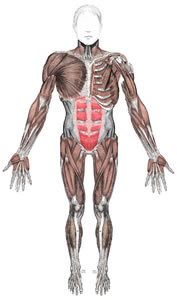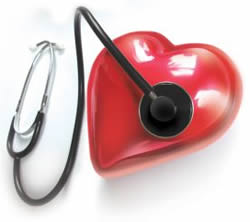By Cindy Schellenberg
 Many people think blood circulation consists merely of the heart, arteries and veins, but these form only about one quarter of the total system. The big arteries and veins can be considered as superhighways for blood transport. Blood flows from the heart to the arteries, which lead to smaller and smaller arterioles, and then to a complex network of tiny capillaries. Although nearly invisible to the naked eye, this network of smaller sized blood vessels is so vast that if formed into a single tube, it would encircle the earth several times. Why is this network so large?
Many people think blood circulation consists merely of the heart, arteries and veins, but these form only about one quarter of the total system. The big arteries and veins can be considered as superhighways for blood transport. Blood flows from the heart to the arteries, which lead to smaller and smaller arterioles, and then to a complex network of tiny capillaries. Although nearly invisible to the naked eye, this network of smaller sized blood vessels is so vast that if formed into a single tube, it would encircle the earth several times. Why is this network so large?
Vital exchanges take place in the capillaries, after which the blood begins its journey back to the heart – from the capillaries through slightly larger venules, then to larger veins, to finally reach the heart and begin the cycle again, thousands of times each day. The arterioles, venules and capillaries collectively form what is known as “microcirculation”, and comprise the remaining three quarters of our circulatory system.
Many scientists believe that a fully functional microcirculation is the key to health because the origin of many of today’s diseases, chronic conditions and general health problems can all be traced to a circulatory dysfunction. Why? Because microcirculation plays an essential role in supplying the body with what it needs.
How many people realize that a rhythmic expansion and contraction occurs in the walls of our arterioles and venules to assist the heart in pumping blood through the body? The purpose of this pumping action is to push the blood into and through the tiny capillaries, and that is where oxygen and nutrients are delivered to every one of our billions of cells, and exchanged for CO2 and other metabolic waste products. In a young and healthy person, this pumping action occurs from 3 to 5 times a minute. As we age, or become ill, this action may be reduced to only one time every ten minutes, thereby putting an undue strain on the heart and limiting the blood flow from reaching everywhere in the body it needs to go.
The crucial exchanges of oxygen, nutrients and waste take place only in the tiny capillaries. Under optimal conditions, a continual cycle of feeding and cleansing our cells enables the cells to work efficiently. A very important part of this work is producing sufficient energy to run all of the body’s complex regulatory systems that we rely upon, such as: the immune, musculoskeletal, digestive, lymphatic and nervous systems.
 Our bodies depend on a constant supply of energy to perform all our functions and internal communications. How often have you heard people make comments like, “I don’t feel like getting up in the morning; I can’t think clearly before I have my coffee; By four o’clock in the afternoon, I’m ready to take a nap; I’m just too tired to go to the gym; or My family seems to catch every cold or flu in the wintertime”. When our microcirculation becomes restricted in any way, our cells are deficient in energy and thus we are unable to feel well, maintain good health and age gracefully.
Our bodies depend on a constant supply of energy to perform all our functions and internal communications. How often have you heard people make comments like, “I don’t feel like getting up in the morning; I can’t think clearly before I have my coffee; By four o’clock in the afternoon, I’m ready to take a nap; I’m just too tired to go to the gym; or My family seems to catch every cold or flu in the wintertime”. When our microcirculation becomes restricted in any way, our cells are deficient in energy and thus we are unable to feel well, maintain good health and age gracefully.
Unfortunately, microcirculation is frequently limited or damaged by a number of modern lifestyle factors, including stress, lack of exercise, smoking, poor diet, environmental pollution and multiple medications, as well as by age. It may take months or even years for deficiencies and toxins in our cells to accumulate and manifest as pain or symptoms of disease. We are seeing more health problems at younger ages. Conventional medicine has had limited success in treating impaired microcirculation, plus there are often accompanying risks and undesirable side effects. Therefore, it is the author’s personal opinion that education, proactive protection and natural support of our tiniest blood vessels deserve much more attention in our early stages of life. This is not only a question of taking responsibility for our own health, but also feeling comfortable that we are making informed decisions for our entire family.
Our body is designed to heal itself when it gets what it needs. Educational awareness about the importance of microcirculation is one of the first steps. Common sense support measures include maintaining a balanced healthy diet, regular exercise, managing stress levels, getting enough sleep, as well as utilizing the best health technology available. Fortunately, scientific research into our physiological intricacies continues to offer us new tools to promote greater knowledge and health.
– Cindy Schellenberg is the owner of Peak Performance Health Products near Petaluma, CA. For the past 10 years, she has been part of the health community and building a healthy lifestyle with the aid of an innovative medical device to improve blood flow. She may be contacted through www.bemeramerica.com/LLS.
